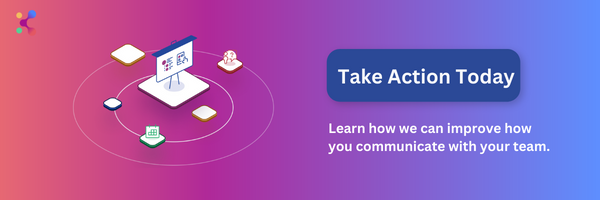.jpg)
The Value of Ongoing Learning for Frontline Employees
Upskilling and staff learning have been hot topics in employee engagement strategy for years, but the COVID-19 pandemic has re-emphasized the importance of training. This is especially true for frontline workers who are craving the skills to be responsive and help their business quickly pivot.
Upskilling focuses on continuous training to help employees build new skills and minimizes knowledge gaps. An ongoing training strategy has several benefits:
- Better employee engagement
- A more responsive business
- Improved bottom line
When leadership gives employees opportunities to learn and grow, staff feels more empowered with their work and engaged with the brand. Ongoing learning motivates employees to take actionable next steps in their career and builds deep skillsets across the organization.
When employees have a toolkit of skills, everyone is more equipped to respond to a changing environment or customer expectations. Depending on how your business pivots, there may be certain skill gaps among your team. But, if there is a culture of learning and programing already in place, new training is more accessible to the business. Teams can catch up quickly and deliver the ideal experience for customers, regardless of how your business has transformed.
Types of Learning: Reactive & Proactive Learning
Reactive Learning
Reactive learning is often born out of necessity and in reaction to a given situation. Reactive training usually includes obligatory or practical training to ensure compliance or that team members are able to execute the main duties of their role.
Reactive training is absolutely essential to get new team members up to speed and to introduce new policies. It can even be in response to a negative event that already occurred. However, reactive training is rarely designed to be engaging or “interesting” to an employee.
Examples of reactive training include:
- Learning how to create pick-up meal kits, a new service your restaurant is offering in response to higher at-home-cooking demand from the pandemic.
- Searching for product information after a customer has asked to learn more about an item on the sale room floor.
- Introducing bias training after an incident of discriminatory behavior on-location.
Proactive Learning
Proactive learning refers to the type of learning an employee actively seeks out. This can include information directly relevant – but not ‘required’– to their roles or relate to an adjacent skillset.
Proactive learning often includes the type of training that builds and strengthens an employee’s skillset. Not only can proactive learning help improve employee output, but studies show that employees place value in learning opportunities in their work. By offering opportunities to learn, employees feel more connected to the brand and engaged with their work.
Examples of proactive learning:
- When a server takes a wine tasting course to make better recommendations to guests.
- When employees join a lunch & learn style seminar to learn new sales skills.
- Quarterly bias training that dives into different types of bias in the workplace and how to counteract it.
Creating a Centralized Knowledge Hub for Training & Learning
If your team decides ongoing learning should be built into its employee engagement strategy, consider identifying a technology to host and share content.
Konverse’s robust feature set includes an intranet, document sharing, chat, video-supported training rooms, and more.
Schedule a demo with Konverse to learn how to empower your frontline workforce.
In fact, one Konverse customer, Better Homes and Garden Metro Brokers, has been using Konverse to create monthly learning challenges and a curriculum for its real estate agents. This has been especially effective at keeping the agents focused and feeling productive through skill-building during the COVID-19 pandemic.
Organizations that invest in their employees by providing opportunities to learn are more likely to see better retention rates and improved performance.
Consider introducing the following content types to your learning programs:
- Lunch & learns
- Online classes
- Product tutorials
- Virtual conferences
- Skills assessments
- Mentoring
- Employee knowledge sharing
Building a Stronger Workforce through Learning
Proving training opportunities to frontline employees – especially during the uncertainty brought on by the pandemic – creates a greater sense of purpose and develops a culture of learning at your business. When staff members have the opportunity to learn and share their knowledge with others, they build stronger bonds with your business and apply new skills to their jobs.


